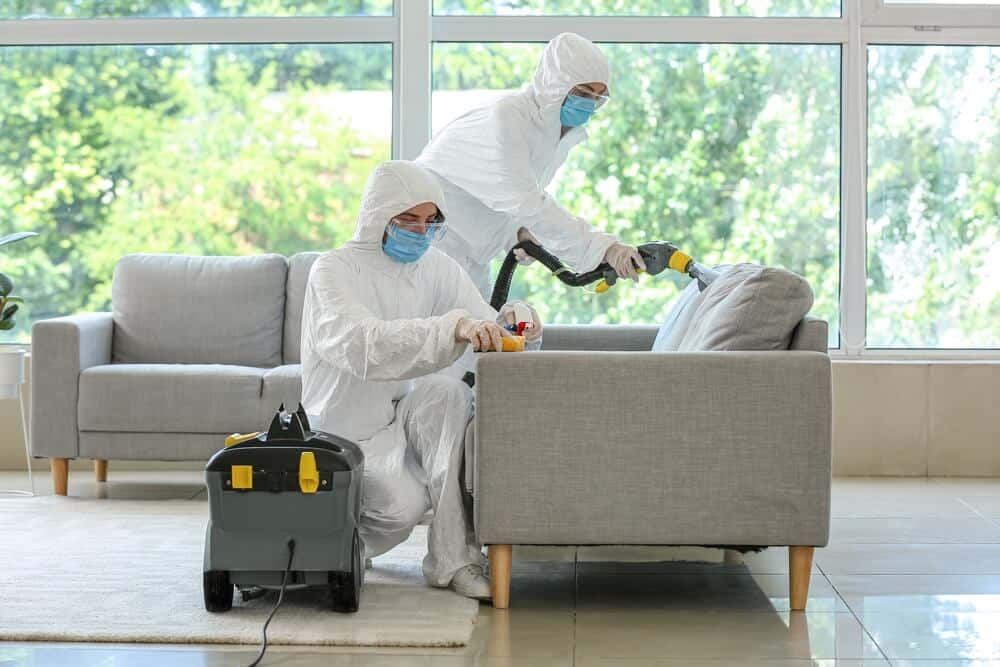Dealing with the aftermath of a suicide is a harrowing experience, compounded by the need to clean up the scene. The process isn’t just emotionally taxing but also requires meticulous attention to detail and safety precautions. This article outlines the essential steps and considerations for cleaning up after a suicide, ensuring safety, and restoring the affected area.
Understanding the Scene
Method and Location
When cleaning up after a suicide, the first crucial step is understanding the method and location of the incident. The method of suicide significantly impacts the cleanup process. For instance, a gunshot wound will result in a vastly different scene compared to a self-inflicted cut. Knowing the method helps in visualizing the extent of the contamination and the potential areas affected.
- Gunshot wounds: Typically, you will need to look for contamination on the walls, ceiling, and surrounding furniture.
- Cuts or lacerations: These incidents generally involve more contained areas, often from waist height down to the floor.
Containing the Area
One of the first things you must do is contain the area. This involves restricting access to the affected space to prevent cross-contamination. Walking through blood or tissue and spreading it to other parts of the home can complicate the cleanup process. Ensure that the area remains undisturbed until professional help arrives.
Initial Steps to Take
Stay Out of the Area
The immediate advice for anyone dealing with a suicide scene is to stay out of the area. This precaution helps avoid the risk of spreading biological contaminants. It’s essential to limit access to the scene to only those involved in the cleanup process.
Visual Inspection
Once you have the necessary information about the method and location, a visual inspection is crucial. This helps to assess the extent of contamination and the materials that need to be cleaned or removed. Pay attention to any visible blood splatters, tissue fragments, or fluids that may have seeped into porous surfaces like carpets or drywall.
Comprehensive Cleaning Process
Full Cleaning Approach Cleaning up after a suicide requires a thorough and systematic approach. Every item in the affected area, whether it’s a piece of furniture, carpeting, or personal belongings, must be assessed for contamination.
- Removal of affected items: Items heavily contaminated with blood or bodily fluids should be disposed of as medical waste. This includes carpets, furniture, and personal items that cannot be adequately cleaned.
- Cleaning and disinfection: Items that can be cleaned are thoroughly disinfected. The goal is to restore them to a safe condition. This process involves using specialized cleaning agents designed to neutralize biological contaminants.
Structural Cleaning
After removing contaminated items, the next step is to clean the structure itself. This involves:
- Ceilings and walls: Scrubbing down and disinfecting surfaces to remove all traces of biological matter.
- Flooring: In many cases, carpets might need to be removed entirely. Hard floors require thorough cleaning and disinfection.
- Sheetrock and wood: Sometimes, it may be necessary to remove sections of sheetrock or wood if they have absorbed blood or bodily fluids.
Risks of Inadequate Cleaning
Health Hazards
Failing to clean up a suicide scene properly poses significant health risks. Blood and bodily fluids can carry pathogens that may lead to infections. Ensuring that the area is thoroughly disinfected is crucial to prevent the spread of disease.
Emotional Impact
Returning to a space that hasn’t been adequately cleaned can be emotionally distressing for family members and friends. It’s vital to restore the area to a state that doesn’t continually remind them of the traumatic event.
Professional Help
Expertise and Equipment Hiring professionals for the cleanup process is often the best course of action. They possess the expertise, experience, and equipment necessary to handle biohazardous materials safely. Professional cleaners follow strict protocols to ensure the thorough disinfection of the affected area. Restoration to Normalcy Professionals aim to restore the affected area to its original state. This might involve repainting walls, replacing carpets, or even renovating parts of the room. The goal is to leave the space as a blank canvas, free from any reminders of the incident.
Conclusion

Cleaning up after a suicide is a complex and sensitive task that requires careful attention to detail and a methodical approach. By understanding the method and location of the incident, containing the area, and employing a comprehensive cleaning process, you can ensure safety and help restore a sense of normalcy. Professional cleanup services provide the expertise and support needed during such challenging times, ensuring that the affected area is safe and free from biohazards. Contact Scene Clean today to get the professional help you need to manage this difficult task.






